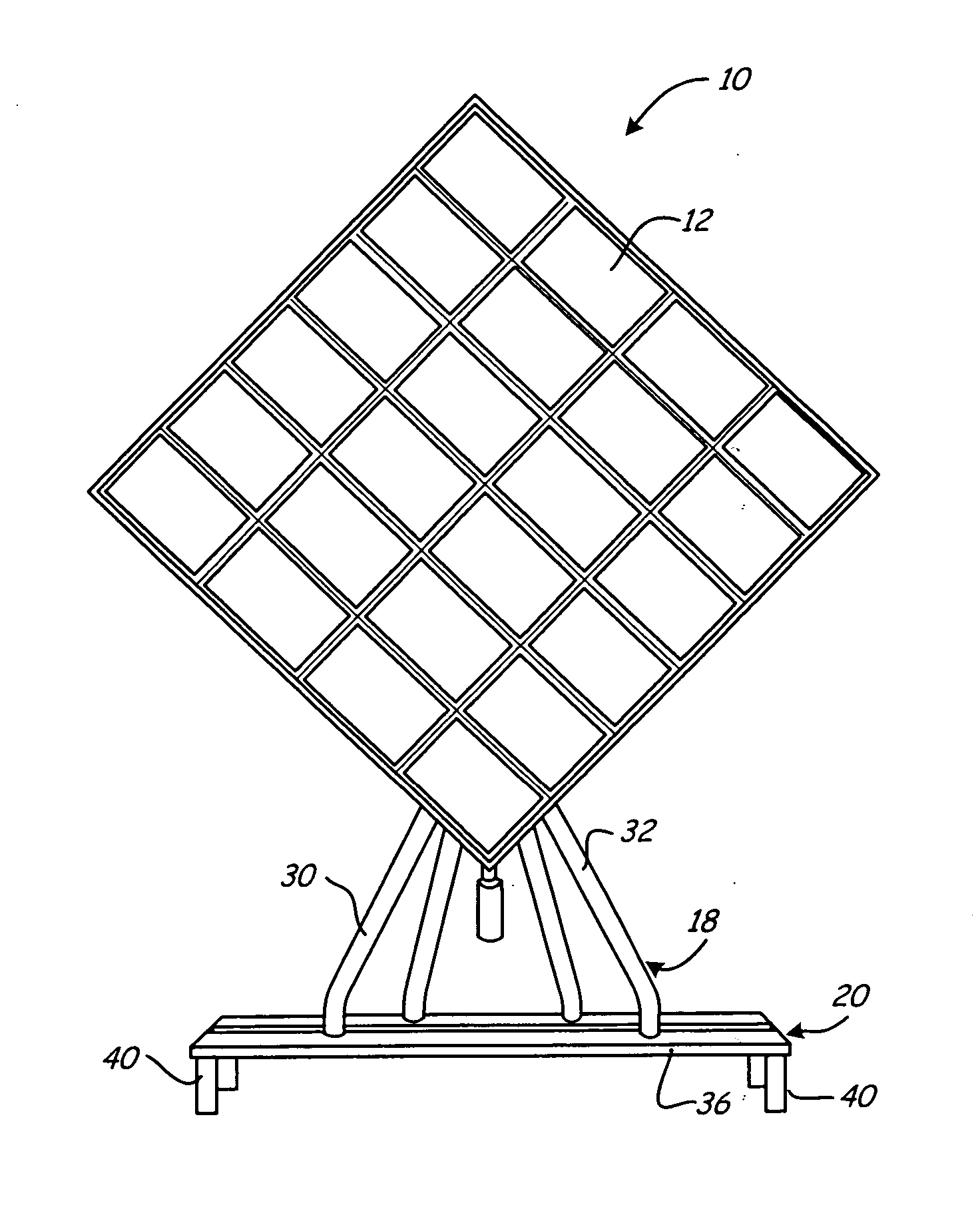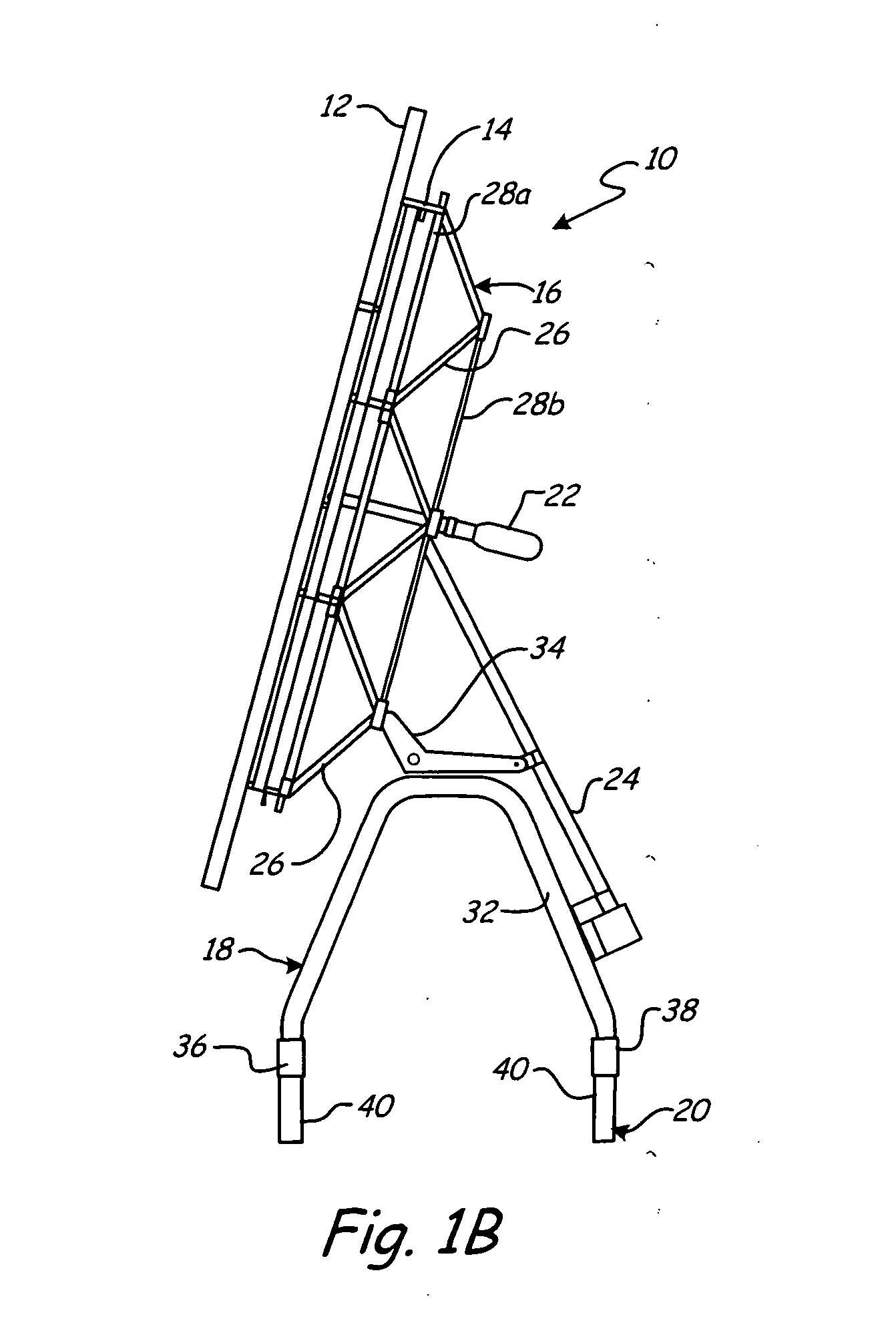Solar tracker
a tracker and solar energy technology, applied in the safety of solar heat collectors, light radiation electric generators, lighting and heating apparatus, etc., can solve the problems of no storage means, high cost of geared motors, and added cost of producing trackers
- Summary
- Abstract
- Description
- Claims
- Application Information
AI Technical Summary
Benefits of technology
Problems solved by technology
Method used
Image
Examples
first embodiment
[0015]FIGS. 1A and 1B show a front view and a side view, respectively, of two-axis solar tracker 10 in a raised position and will be discussed in conjunction with one another. Solar tracker 10 generally includes solar array 12 consisting of multiple panels, frame 14, truss 16, base 18, leg mount 20, first actuator 22, and second actuator 24. Truss 16 is a stiff, lightweight, and cost-effective support for solar array 12 and is pivotable relative to frame 14 and base 18. In order to protect solar array 12 during extreme weather conditions, solar tracker 10 is pivotable between a raised position and a stowed position. Solar tracker 10 with truss 16 has increased wind load resistance and is adaptable to various building structures while using conventional linear actuators.
[0016] Solar tracker 10 is designed to align solar array 12 with respect to the sun so that it collects the maximum amount of solar energy. Solar energy is absorbed into solar array 12 where it is subsequently convert...
second embodiment
[0032]FIG. 7 shows a perspective view of solar tracker 100 in a raised position. Solar tracker 100 generally includes solar array 102, frame 104, first linkage arm 106, second linkage arm 108, first actuator 110, second actuator 112, and leg mounts 114a-114d. Linkage arms 106 and 108 of solar tracker 100 allow solar array 102 to be moved into a stowed position during high winds. Solar array 102 of solar tracker 100 functions in the same manner as solar array 12 of solar tracker 10. Similar to solar tracker 10, solar tracker 100 is also pivotable between a raised position and a stowed position, uses conventional linear actuators, and is adaptable to various building structures.
[0033] Frame 104 is attached to solar array 102 and connects solar array 102 to first and second linkage arms 106 and 108. Frame 104 generally includes horizontal crossbars 104a and 104b and pivot frame 116. Pivot frame 116 has a first end 116a and a second end 116b. First end 116a of pivot frame 116 is connect...
PUM
 Login to View More
Login to View More Abstract
Description
Claims
Application Information
 Login to View More
Login to View More - R&D
- Intellectual Property
- Life Sciences
- Materials
- Tech Scout
- Unparalleled Data Quality
- Higher Quality Content
- 60% Fewer Hallucinations
Browse by: Latest US Patents, China's latest patents, Technical Efficacy Thesaurus, Application Domain, Technology Topic, Popular Technical Reports.
© 2025 PatSnap. All rights reserved.Legal|Privacy policy|Modern Slavery Act Transparency Statement|Sitemap|About US| Contact US: help@patsnap.com



